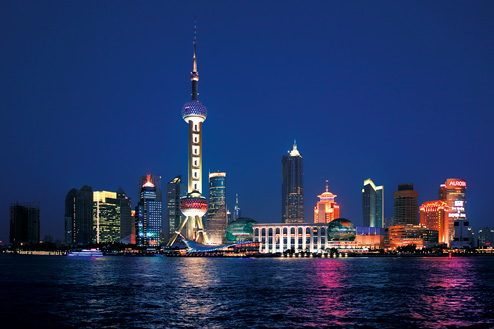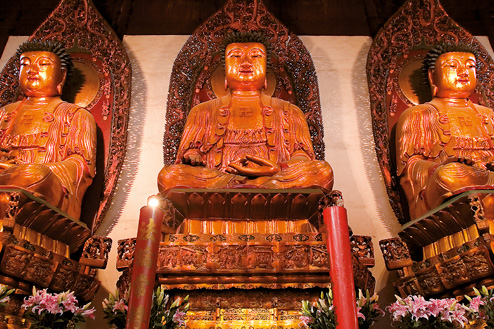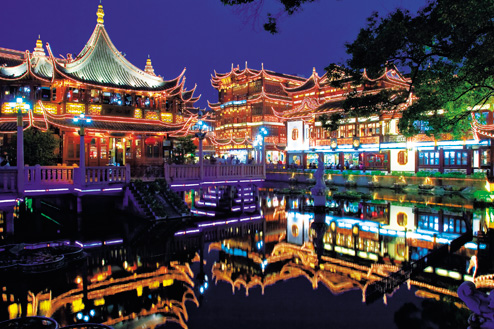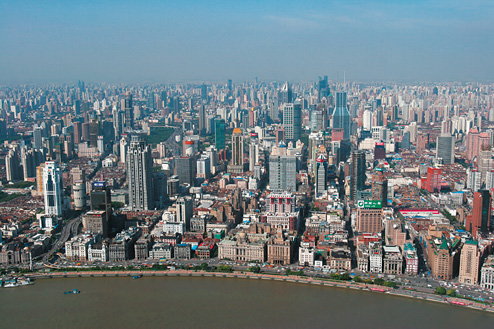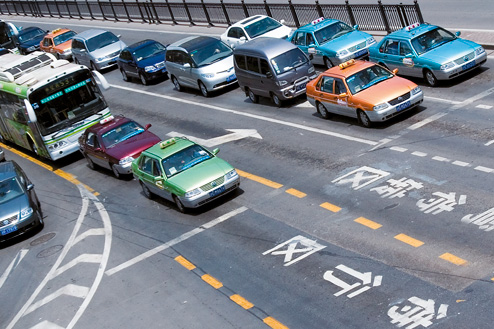China Timeline
751 The administrative district of Huating County is set up in what is now the south-west suburbs of modern Shanghai.
991 Shanghai town is established within Huating County.
1260 From 1260 until 1274, Shanghai develops into a key trading port.
1292 The establishment of Shanghai County, regarded as the beginning of Shanghai City.
1553 A city wall, 8m high and 4.5km long, is built around Shanghai to protect it against Japanese pirates plaguing China’s east and south coasts. A 6m-deep moat is built outside the wall.
1685 Shanghai sets up its first customs office with the opening of the Shanghai Customs House, after the ban on sea trade is lifted to ease trading along the east coast. The original building is burnt down in the Taiping Rebellion in 1853.
1839 The First Opium War breaks out when China’s Qing Dynasty tries to stop the trade in opium by the British. Hong Kong is captured by the British in 1841 and an expeditionary force heads north-east up the coast, attacking successive cities.
1842 Shanghai is occupied by the British after the Chinese are defeated at the mouth of the Yangtze. The Treaty of Nanjing is signed on August 29, ending the Opium War. China cedes Hong Kong to Britain. Shanghai becomes one of five treaty ports, open to foreign trade.
1845 The British Concession is established in Shanghai, making it exempt from local law.
1849 The French Concession is created, and continues to operate with extraterritorial rights until 1946.
1853 Following the Taiping Rebellion of 1850, Shanghai is occupied by a triad from a religious zealot group called the Small Sword Society.
1854 New legislation allows Chinese people to live in the concessions, pushing land prices higher and providing westerners with a new source of income and control.
1863 The British and American Concessions are merged to create the International Settlement after the failure of a proposal the previous year to make Shanghai an independent free city.
1912 Shanghai’s wall is demolished after revolution brings China’s dynastic period to an end. The first provisional president of the new republic is Sun Yatsen, who lives in Shanghai from 1918 to 1924.
1921 The Chinese Communist Party is founded in Shanghai on July 1, when the first Congress is held in a small French Concession building, with Mao Zedong in attendance.
1927 Shanghai is captured by the Nationalist army under Chiang Kaishek on April 12. Communist leaders are rounded up and executed, starting a lengthy civil war.
1929 The Cathay Hotel, later renamed the Peace Hotel, opens on the Bund. The Bund’s European-style architectural elegance is offset by the vice and mob crime of the now-decadent city.
1937 The Japanese invade and capture the city in August for the second time in five years during the Second Sino-Japanese War, finally overcoming resistance in November.
1949 Communists liberate Shanghai on May 25 without bloodshed. Chiang Kaishek escapes to Taiwan. Chen Yi becomes Shanghai’s first Communist mayor. People’s Republic of China proclaimed by Mao on October 1 in Beijing.
1995 Asia’s tallest structure, the Oriental Pearl Tower, opens in Shanghai and symbolises the dynamic, new city. Fortune 500 Global Economic Forum is held in Shanghai.
2002 Shanghai wins the bid to host World Expo 2010 and unveils redevelopment plans for Huangpu River and downtown riverfront.
2003 The Maglev becomes the world’s fastest-operating train when it starts running between Pudong International Airport and Shanghai. It can reach speeds of more than 350kph.
2007 Shanghai hosts the Special Olympics.
991 Shanghai town is established within Huating County.
1260 From 1260 until 1274, Shanghai develops into a key trading port.
1292 The establishment of Shanghai County, regarded as the beginning of Shanghai City.
1553 A city wall, 8m high and 4.5km long, is built around Shanghai to protect it against Japanese pirates plaguing China’s east and south coasts. A 6m-deep moat is built outside the wall.
1685 Shanghai sets up its first customs office with the opening of the Shanghai Customs House, after the ban on sea trade is lifted to ease trading along the east coast. The original building is burnt down in the Taiping Rebellion in 1853.
1839 The First Opium War breaks out when China’s Qing Dynasty tries to stop the trade in opium by the British. Hong Kong is captured by the British in 1841 and an expeditionary force heads north-east up the coast, attacking successive cities.
1842 Shanghai is occupied by the British after the Chinese are defeated at the mouth of the Yangtze. The Treaty of Nanjing is signed on August 29, ending the Opium War. China cedes Hong Kong to Britain. Shanghai becomes one of five treaty ports, open to foreign trade.
1845 The British Concession is established in Shanghai, making it exempt from local law.
1849 The French Concession is created, and continues to operate with extraterritorial rights until 1946.
1853 Following the Taiping Rebellion of 1850, Shanghai is occupied by a triad from a religious zealot group called the Small Sword Society.
1854 New legislation allows Chinese people to live in the concessions, pushing land prices higher and providing westerners with a new source of income and control.
1863 The British and American Concessions are merged to create the International Settlement after the failure of a proposal the previous year to make Shanghai an independent free city.
1912 Shanghai’s wall is demolished after revolution brings China’s dynastic period to an end. The first provisional president of the new republic is Sun Yatsen, who lives in Shanghai from 1918 to 1924.
1921 The Chinese Communist Party is founded in Shanghai on July 1, when the first Congress is held in a small French Concession building, with Mao Zedong in attendance.
1927 Shanghai is captured by the Nationalist army under Chiang Kaishek on April 12. Communist leaders are rounded up and executed, starting a lengthy civil war.
1929 The Cathay Hotel, later renamed the Peace Hotel, opens on the Bund. The Bund’s European-style architectural elegance is offset by the vice and mob crime of the now-decadent city.
1937 The Japanese invade and capture the city in August for the second time in five years during the Second Sino-Japanese War, finally overcoming resistance in November.
1949 Communists liberate Shanghai on May 25 without bloodshed. Chiang Kaishek escapes to Taiwan. Chen Yi becomes Shanghai’s first Communist mayor. People’s Republic of China proclaimed by Mao on October 1 in Beijing.
1995 Asia’s tallest structure, the Oriental Pearl Tower, opens in Shanghai and symbolises the dynamic, new city. Fortune 500 Global Economic Forum is held in Shanghai.
2002 Shanghai wins the bid to host World Expo 2010 and unveils redevelopment plans for Huangpu River and downtown riverfront.
2003 The Maglev becomes the world’s fastest-operating train when it starts running between Pudong International Airport and Shanghai. It can reach speeds of more than 350kph.
2007 Shanghai hosts the Special Olympics.

